Fortune telling, in the forms of reading tea leaves, tarot cards, palms, and crystal ball gazing, have long been popular forms of entertainment. People were and are fascinated to see readings of celebrities, hoping to learn more about them.
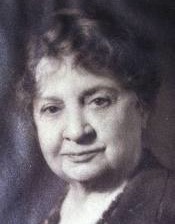
Palm readers could become celebrities in their own right, like Nellie Simmons Meier (1864-1944) who built an international reputation as a palmist by insisting that it was a scientific practice rather than an occult hobby. Meier did not tell fortunes–she conducted “character readings”–but she gathered them for some of the most famous people in the early 20th century–Albert Einstein, Margaret Sanger, George Gershwin, Walt Disney, and Jane Addams. Meier organized over 100 palm prints and character readings into chapters in a book, called Lion’s Paws, that she published in 1937.
Addams’ palms were included in the chapter “Can The Leopard Change His Spots?,” along with Norman Thomas, Margaret Sanger, Susan B. Anthony, Ben B. Lindsey, Carrie Chapman Catt, and Jacob Riis. She prefaced the readings with a question:
If a reformer or a radical makes his living in the very work of reform, he is doubly suspect; if he makes no money, he is believed to be seeking notoriety, honor, distinction. Do the hands of reformers and radicals sustain this suspicion?
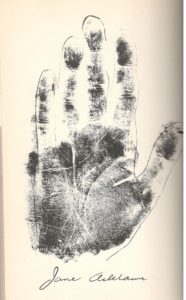
When Meier observed Addams’ palms she noted both the extraordinary similarities and important differences between her prints and those of Susan B. Anthony’s. Both women, she reported, demonstrated practical and executive ability, appreciation of the arts, and honesty, as well as strong wills and love for others. However, she saw important differences, primarily centering around the reasons that they did what they did.
Addams, Meier claimed, was motivated by the individuals she helped. For her it was not about fame or even about the “common good” as she claimed it was for Anthony. Rather, everything came down to her interactions with individuals, and the justice and mercy served, rather than a more nebulous greater good. It is certainly evident that Addams cared about those around her and wanted to help people–if she had not she probably would not have started Hull House or crusaded for the rights of workers and immigrants.
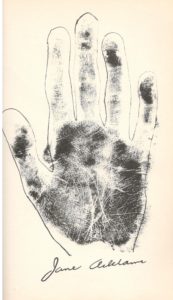
According to the palm reader, Addams was also a born conservative, cautious about everything. Something that, intriguingly enough, appears to be present in many of her letters, which paint a picture of Addams as a woman who is faultlessly polite and dignified- the very image of a conservative woman.
Is Meier’s character reading an accurate one? It certainly seems to be in line with the Jane Addams in the letters being transcribed. However, this is also information anyone could get just by reading her books and news articles about her. These present a picture of a woman who sounds exactly as Meier described. Of course, it is possible that Jane Addams’ kindness, generosity, and care for others was indeed written in her hand, but perhaps it is more important that it was written in her life.
For more on Nellie Simmons Meier and her character readings, see finding aids to collections of her papers at the Library of Congress and the Indiana Historical Society. For details on her home, see a description of Tuckaway from Historic Meriden Park.

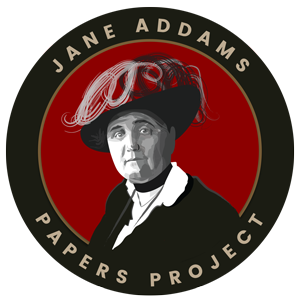
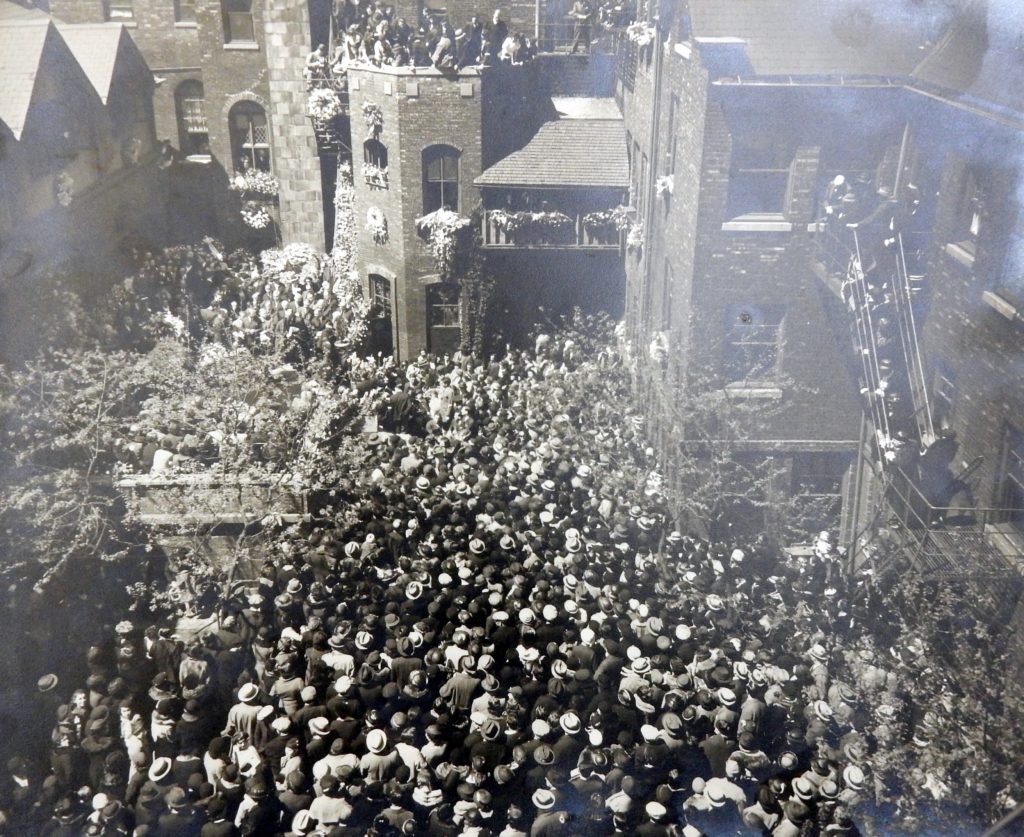
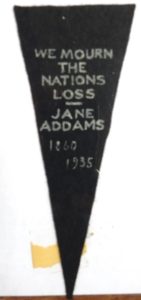
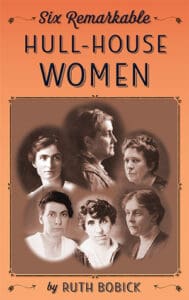 What stood out in my research about “six remarkable Hull-House women”–Jane Addams, Julia Lathrop, Florence Kelley, Alice Hamilton, and Grace and Edith Abbott–was the crucial role they played in the reform of America’s industrial system. Equally striking was the Supreme Court’s resistance to regulating it.
What stood out in my research about “six remarkable Hull-House women”–Jane Addams, Julia Lathrop, Florence Kelley, Alice Hamilton, and Grace and Edith Abbott–was the crucial role they played in the reform of America’s industrial system. Equally striking was the Supreme Court’s resistance to regulating it.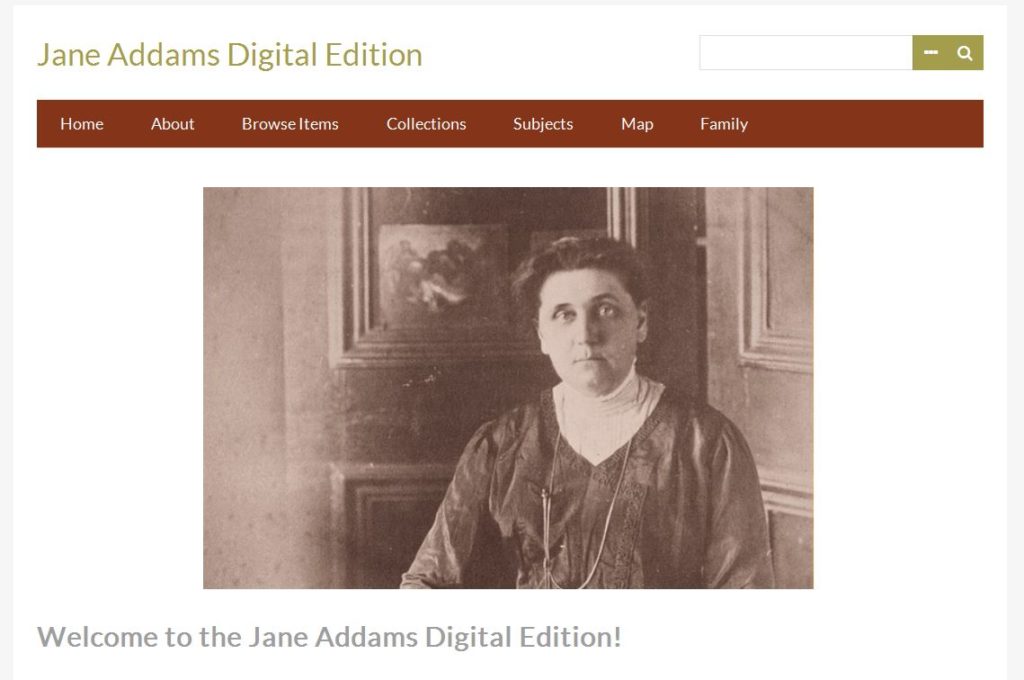
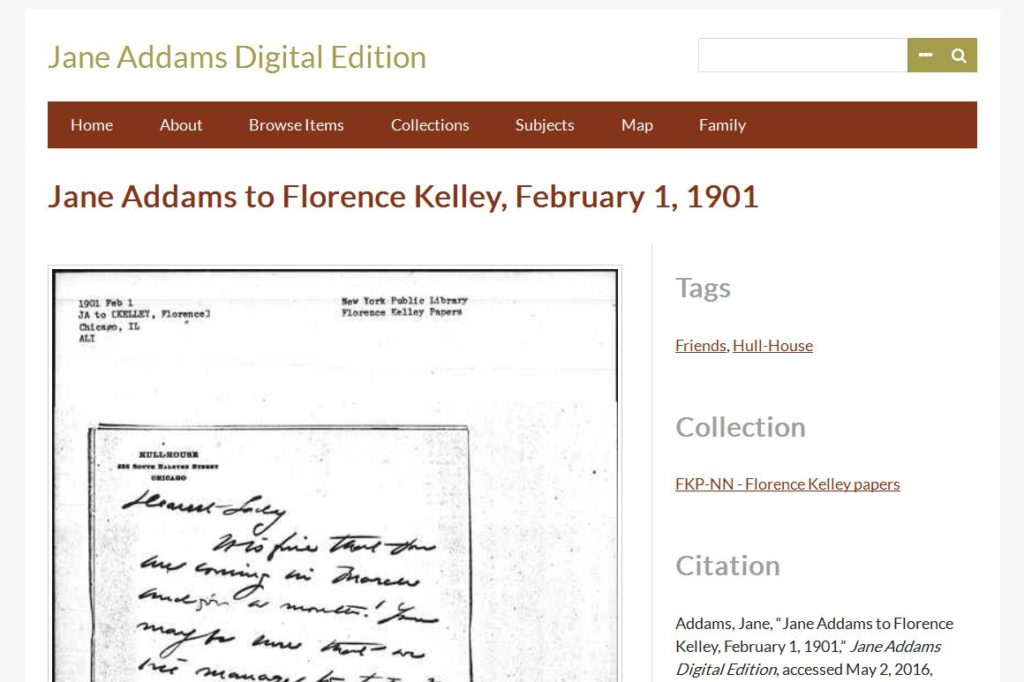
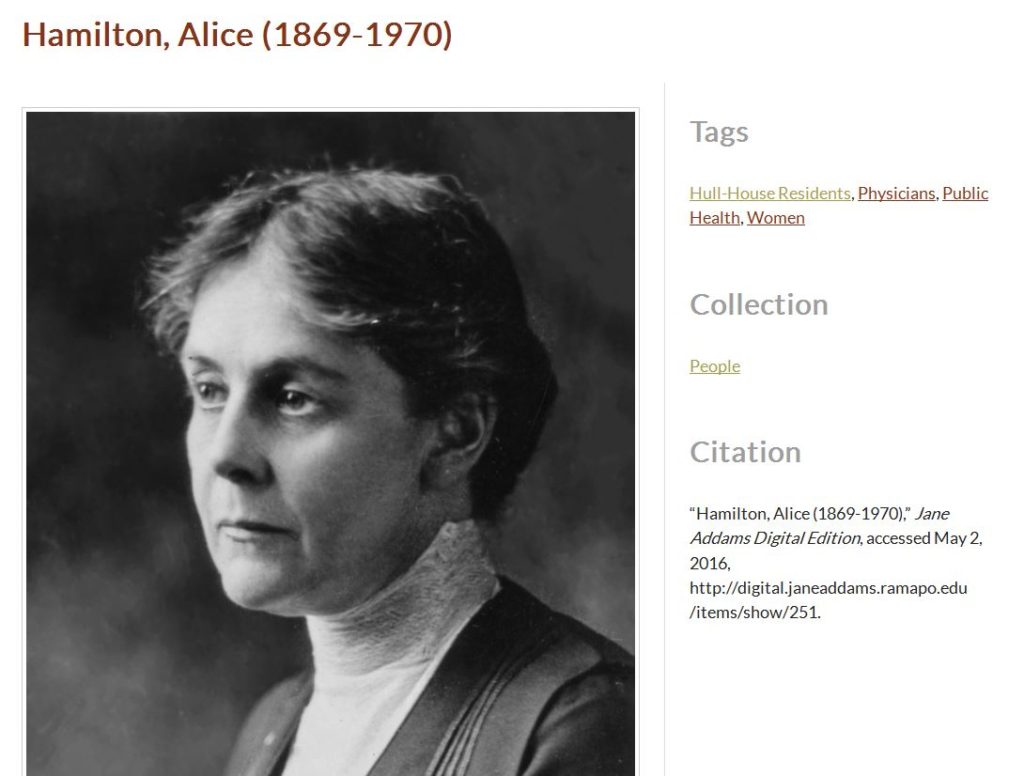
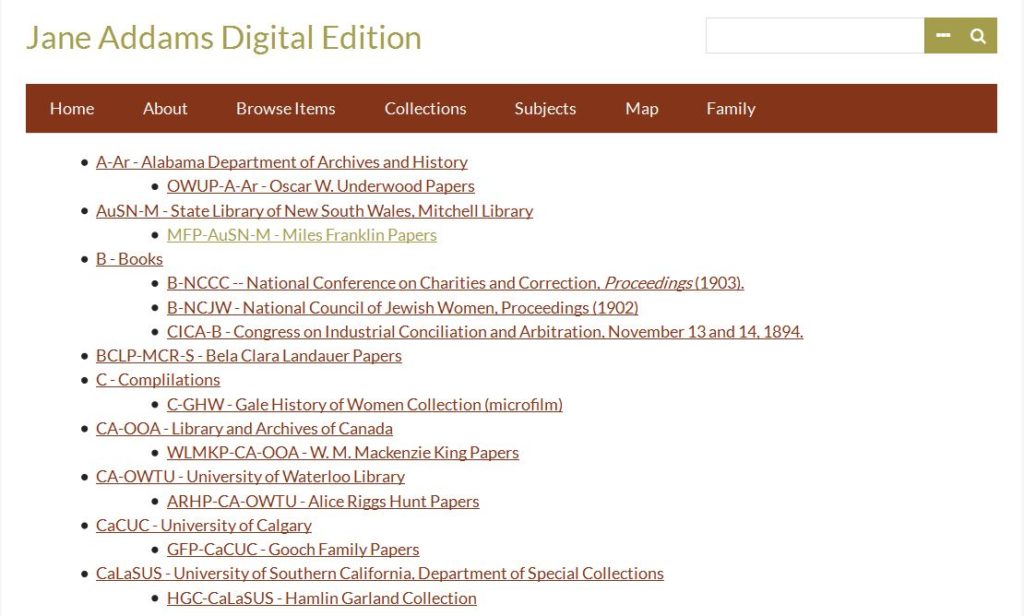

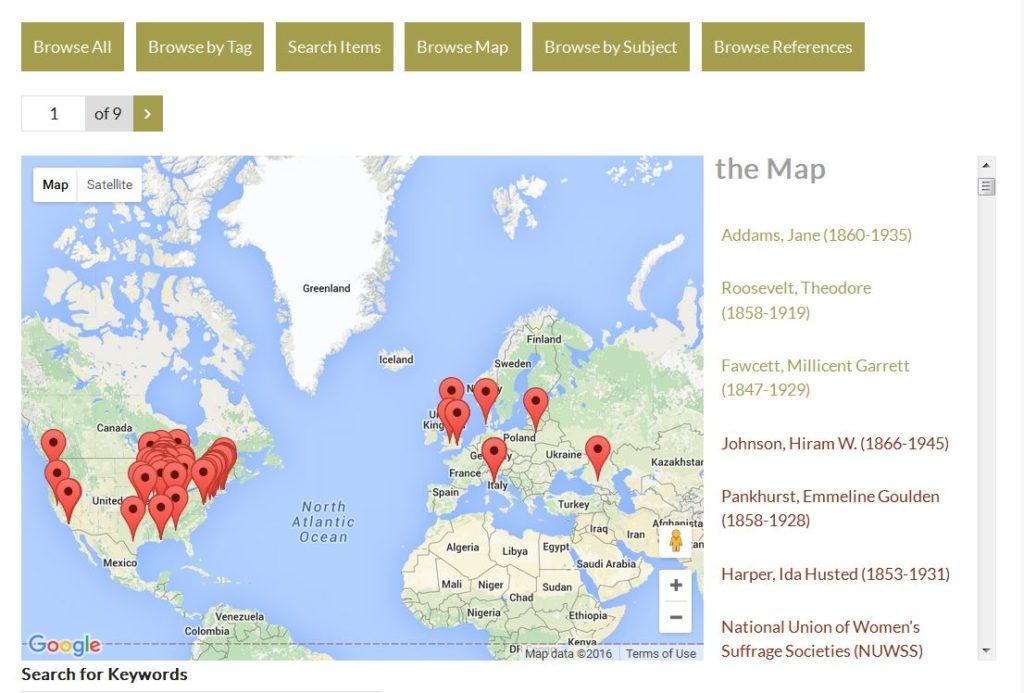
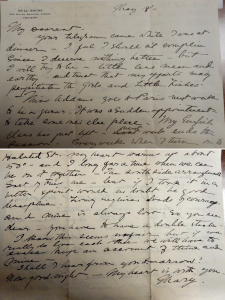
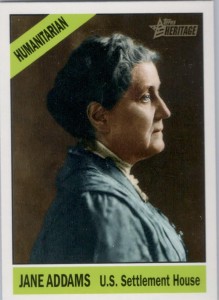
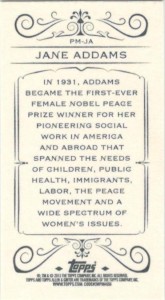
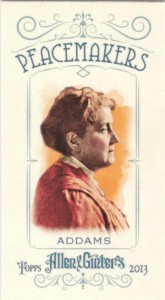
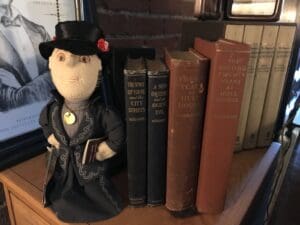 Historically significant women are not often made into commercial dolls, but there is a market for specialty dolls featuring historical figures. The Jane Addams-Hull-House Museum offers a nattily dressed Addams (currently out-of-stock) that we hope will grace our shelves one day! She carries a copy of Twenty Years at Hull-House and wears her Nobel Prize as a necklace.
Historically significant women are not often made into commercial dolls, but there is a market for specialty dolls featuring historical figures. The Jane Addams-Hull-House Museum offers a nattily dressed Addams (currently out-of-stock) that we hope will grace our shelves one day! She carries a copy of Twenty Years at Hull-House and wears her Nobel Prize as a necklace.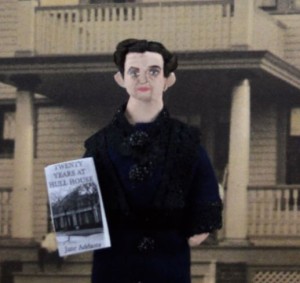 Searching etsy.com brings up UneekDollDesigns’ page which offers a series of historical and cultural icons made into handcrafted dolls. Jane Addams’s doll is posed holding a replica Twenty Years at Hull-House. Photographed with a historical photograph in the background, this Jane seems a bit dour. Others in this series include actress Bette Davis, the Marx Brothers, and Sojourner Truth.
Searching etsy.com brings up UneekDollDesigns’ page which offers a series of historical and cultural icons made into handcrafted dolls. Jane Addams’s doll is posed holding a replica Twenty Years at Hull-House. Photographed with a historical photograph in the background, this Jane seems a bit dour. Others in this series include actress Bette Davis, the Marx Brothers, and Sojourner Truth.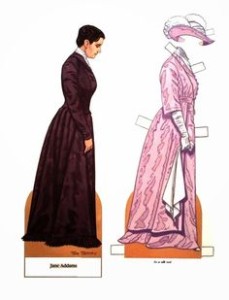
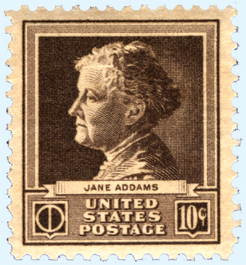 In 1940 the United States Postal Service issues a series on Famous Americans that was comprised of 35 stamps, issued in groups: Artists, Authors, Composers, Educators, Inventors, Poets, and Scientists. Jane Addams was included in the Scientist category, along with John James Audubon, Dr. Crawford W. Long, Luther Burbank and Dr. Walter Reed. A mint condition 10-cent Addams stamp goes for about $3.50 today.
In 1940 the United States Postal Service issues a series on Famous Americans that was comprised of 35 stamps, issued in groups: Artists, Authors, Composers, Educators, Inventors, Poets, and Scientists. Jane Addams was included in the Scientist category, along with John James Audubon, Dr. Crawford W. Long, Luther Burbank and Dr. Walter Reed. A mint condition 10-cent Addams stamp goes for about $3.50 today.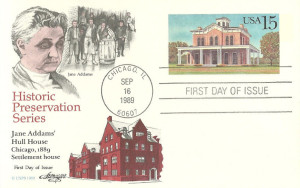
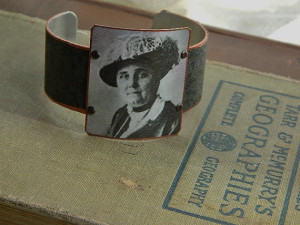 Jewelry-maker Sarah Wood crafts necklaces, earrings, and bracelets, using historic photographs under the slogan “History is Handmade.” She has a gallery on Women’s History and Feminism that includes Jane Addams pieces like the one shown to the left. The designs are also available with images from a wide array of historical women, many lesser known, as well as a series of suffrage images.
Jewelry-maker Sarah Wood crafts necklaces, earrings, and bracelets, using historic photographs under the slogan “History is Handmade.” She has a gallery on Women’s History and Feminism that includes Jane Addams pieces like the one shown to the left. The designs are also available with images from a wide array of historical women, many lesser known, as well as a series of suffrage images. Those who are over 21 can drink a toast to Jane Addams and others founders of sociology using a set of shot glasses featuring Jane Addams, Harriet Martineau, W. E. B. DuBois, and Marianne Weber offered by CalacaCreations, available along with a series of other printed items on etsy.com.
Those who are over 21 can drink a toast to Jane Addams and others founders of sociology using a set of shot glasses featuring Jane Addams, Harriet Martineau, W. E. B. DuBois, and Marianne Weber offered by CalacaCreations, available along with a series of other printed items on etsy.com.

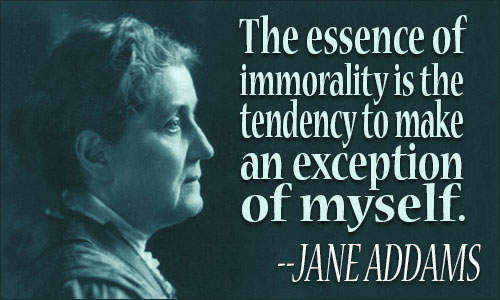


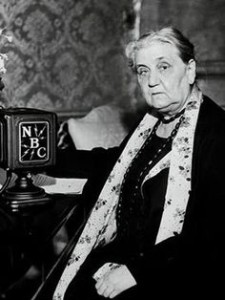

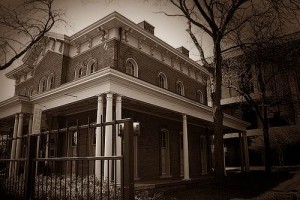
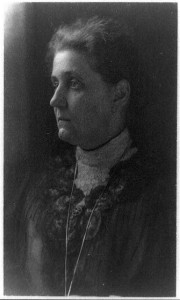
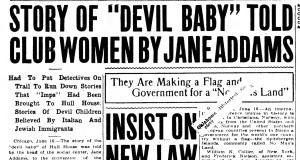

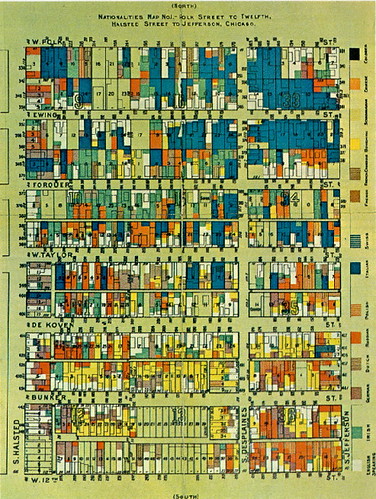
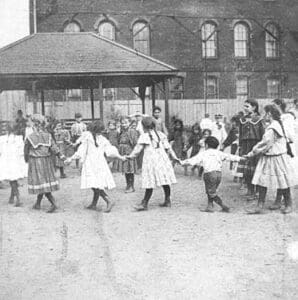
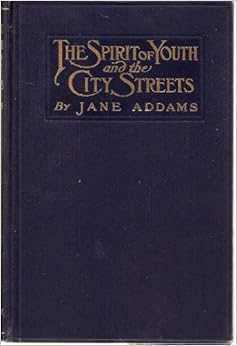 When Progressives looked to immigrant neighborhoods, they saw society’s flaws acted out in juvenile delinquency–child labor, poor housing and education, poverty, and a lack of public entertainments. Fixing the problems did not start with the individual or with the immigrant community itself. Addams called for education as the only means of:
When Progressives looked to immigrant neighborhoods, they saw society’s flaws acted out in juvenile delinquency–child labor, poor housing and education, poverty, and a lack of public entertainments. Fixing the problems did not start with the individual or with the immigrant community itself. Addams called for education as the only means of: